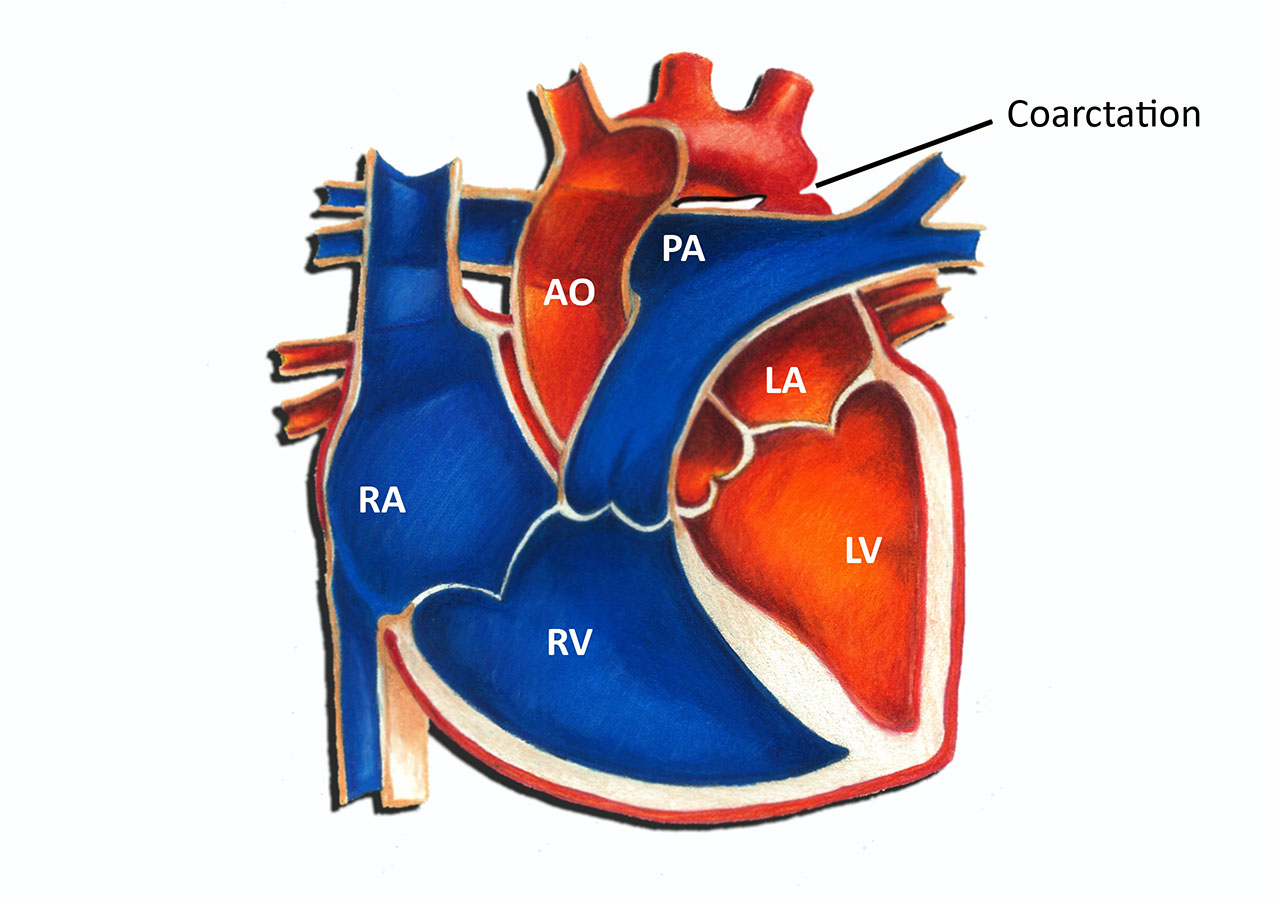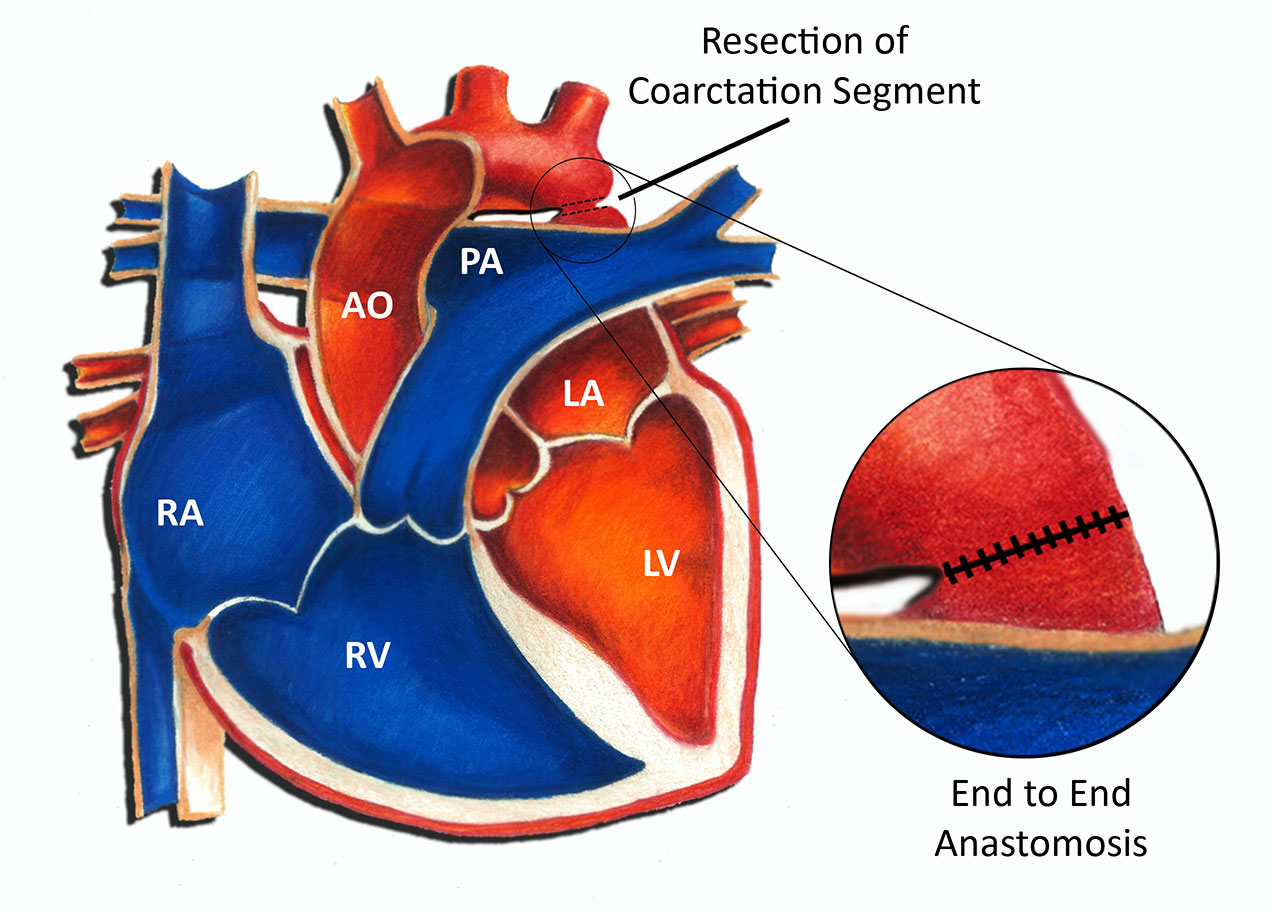Coarctation of the Aorta - Surgical Repair


A coarctation of the aorta is a narrowing of the aorta that results in the heart having to squeeze harder to force blood past the narrowed area. Most patients with coarctation require surgery to correct the condition. Often children are diagnosed as newborn infants; in this setting they frequently have symptoms and occasionally may be critically ill. When patients are diagnosed as older children they frequently come to attention because of long-standing high blood pressure.
Surgery for coarctation of the aorta is typically done through a thoracotomy. A thoracotomy is an incision on the upper left side of the back. Because the aorta actually dives back in the body as it turns to the carry blood downwards, a coarctation is usually more easily accessed from this approach, as opposed to from the front of the chest. Occasionally it may be necessary to fix a coarctation from the front of the chest if there is a long segment of narrowing involved.
With a thoracotomy, the surgeon spreads the ribs and moves the lung out of the way. Because the aorta is outside the heart, cardiopulmonary bypass is not necessary. After locating the coarctation, the surgeon transiently occludes blood flow above and below the area of narrowing. With blood flow occluded, the surgeon removes the narrowed area and then sutures the remaining two ends together, as shown in the diagram above. This procedure is called an end to end anastomosis.
The vast majority of patients who undergo surgical repair of a coarctation do very well. In many instances it is the only surgery ever required. Older children who undergo surgery are often discharged from the hospital in a few days. Usually they are cleared to return to full activity within 6 weeks. Newborn and infants may require a longer recovery time.
All patients who undergo coarctation surgery are required to take antibiotics before any dental or surgical procedures for 6 months following the procedure. This precaution is designed to minimize the risk of any bacterial infection forming in heart tissue. This can happen with dental work and certain forms of surgery. After 6 months, usually the normal heart tissue has sealed things in place sufficiently to no longer require this.
